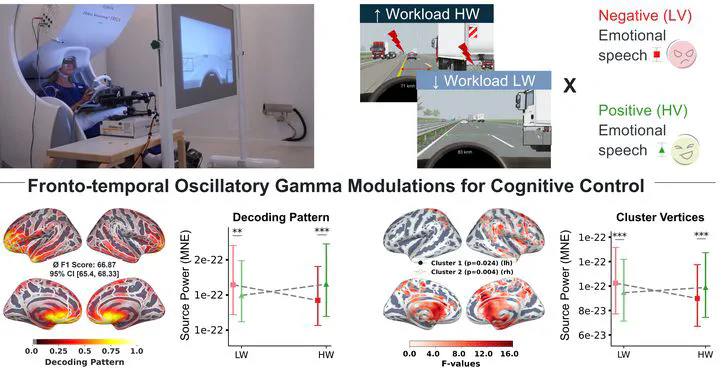Decoding the Neural Basis of Interactions between Emotional Speech Processing and Attentional Control in Realistic Environments

Available cognitive resources modulate the processing of emotional stimuli. Dual-task paradigms suggest that under low cognitive workload, negative emotional distractors impair task performance, whereas positive distractors can enhance it. In contrast, under high workload, attentional control mechanisms facilitate goal-directed processing, inhibit distraction, and attenuate emotional processing. Prefrontal regions have been implicated in top-down inhibitory control. However, despite evidence from tightly controlled laboratory studies, the neurophysiological basis of such mechanisms in complex, naturalistic environments remains poorly understood.
Using whole-head magnetoencephalography (N = 48), we investigated how negative and positive naturalistic speech and visuospatial workload modulate neural processing in a multisensory driving simulation. To increase sensitivity and circumvent assumptions about inter-individual shared anatomical and functional neural origins, we employed multivariate pattern analysis using linear discriminant analysis and common spatial patterns in sensor space. Emotional speech and workload conditions were clearly discriminated, and physiologically interpretable contributing patterns were transformed into source space.
This approach identified the left inferior frontal gyrus, orbitofrontal gyrus, and left anterior temporal lobe as key regions underlying the interaction between emotional speech processing and attentional control during visuo-spatial workload. We conclude that these regions are involved in top-down mechanisms that support flexible up- and down-regulation of emotional speech processing, depending on available cognitive resources. We advocate the use of multivariate statistics to study brain function in complex, naturalistic environments.